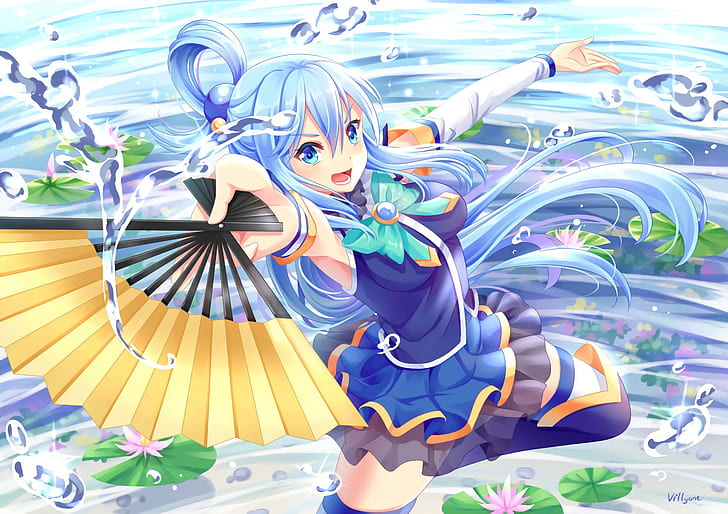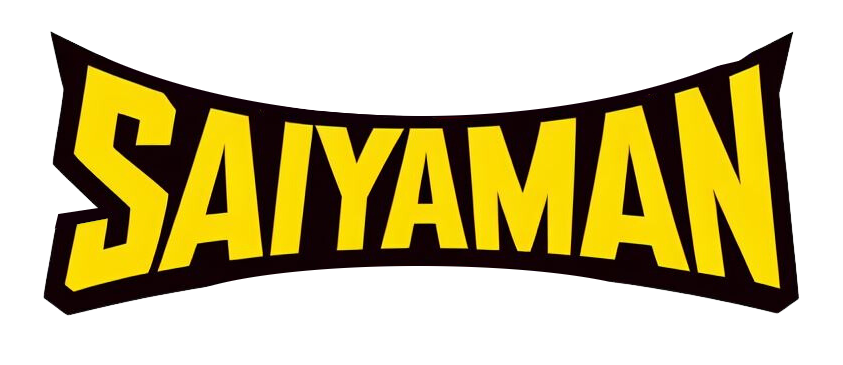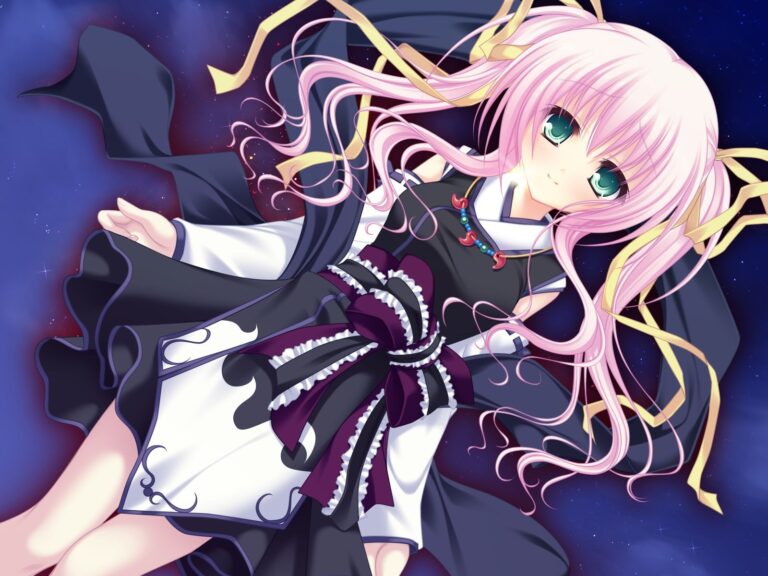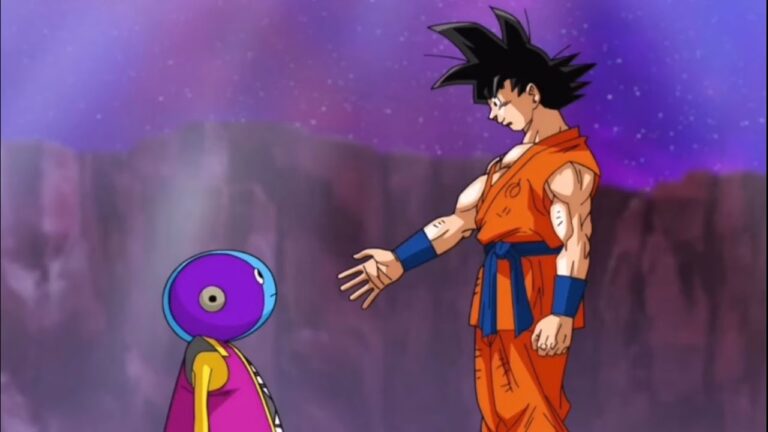What Was the First Anime?

The explosion in popularity of anime in the late 90s in America might make it seem like that’s when it first arrived, but anime had been airing in the US for decades before that. The first anime to make it onto American screens was “Magic Boy,” followed closely by “Panda and the Magic Serpent.” These early anime releases paved the way for the anime industry to flourish in the West.
Key Takeaways:
- The first anime to air in the US was “Magic Boy,” followed by “Panda and the Magic Serpent.”
- These early anime releases set the foundation for the future success of anime in America.
- Anime has a long and rich history in Japanese animation, predating its popularity in the West.
- Understanding the origins of anime helps to appreciate its development and impact on popular culture.
- The early releases of anime in America sparked interest and paved the way for future anime series and films.
The Birth of Anime in America
When it comes to the origins of anime in America, the popular perception may be that it burst onto the scene in the late 1990s. However, the truth is that anime had already been making its mark in the U.S. for several decades before that. The first anime films to receive documented releases in America were “Magic Boy” and “Panda and the Magic Serpent,” both of which premiered in 1961. These early releases paved the way for the subsequent growth and popularity of anime in the Western world.
Produced by Toei Animation, “Magic Boy” and “Panda and the Magic Serpent” introduced American audiences to the vibrant and visually stunning world of Japanese animation. While these films may not have achieved massive success at the time, they played a crucial role in laying the groundwork for future anime releases and generating interest in the medium among American viewers.
“Magic Boy” and “Panda and the Magic Serpent” were the pioneers that brought anime to American screens in the early 1960s. They may not have been blockbusters, but they sowed the seeds for the anime industry to flourish in the West.”
The arrival of anime in America opened the door for further exploration and appreciation of Japanese animation. It was not until 1963 that one of the first anime series, “Astro Boy” created by Osamu Tezuka, aired on American television. This groundbreaking show captivated audiences with its futuristic setting and endearing robotic protagonist, establishing a strong fan base and laying the foundation for the future popularity of anime in the United States.
The Impact of “Astro Boy” in America
“Astro Boy” not only introduced the concept of anime to American viewers but also influenced a new generation of creators who were inspired by its unique storytelling and animation style. In the years that followed, more anime series made their way onto American television screens, further fueling the growing interest in Japanese animation.
The birth of anime in America is a testament to the enduring appeal and creative impact of this unique art form. From its humble beginnings with “Magic Boy” and “Panda and the Magic Serpent” to the widespread popularity of “Astro Boy,” anime has become an integral part of the American entertainment landscape and continues to captivate audiences of all ages with its immersive storytelling and visually stunning animation.
| Year | Anime Title | Significance |
|---|---|---|
| 1961 | Magic Boy | The first anime film to receive a documented release in the US. |
| 1961 | Panda and the Magic Serpent | The second anime film to receive a documented release in the US. Helped pave the way for the future popularity of anime. |
| 1963 | Astro Boy | One of the first anime series to air on American television. Influenced a new generation of creators and sparked further interest in anime. |
The Rise of Astro Boy: Anime’s Impact on American Television
In 1963, American television viewers were introduced to an anime series that would forever change the landscape of animation in the United States. “Astro Boy,” created by Osamu Tezuka, became one of the first anime shows to air on American TV. This groundbreaking series captivated audiences with its futuristic storyline and endearing characters, leaving a lasting impact on both anime and American popular culture.
“Astro Boy introduced American audiences to the world of anime and inspired a new generation of creators.”
Astro Boy’s success can be attributed to its unique blend of science fiction, action, and emotional storytelling. The show followed the adventures of Astro Boy, a powerful robot boy with incredible abilities who fought for justice and the rights of artificial beings. Astro Boy’s positive portrayal of technology and ethics resonated with viewers, and its popularity paved the way for future anime releases on American television.
By introducing anime to American audiences, “Astro Boy” helped establish a bridge between Japanese and Western animation styles. The show’s artistry and animation techniques showcased the distinct visual aesthetic of anime, drawing inspiration from both Eastern and Western art forms. This cross-cultural exchange would go on to influence the development of both anime and Western animation, inspiring a new generation of creators in both industries.
The Legacy of Astro Boy
The impact of “Astro Boy” on American television cannot be understated. Its success opened doors for other anime series to be introduced to a wider audience, paving the way for the anime boom of the 1990s. Anime’s rise in popularity outside of Japan can be traced back to Astro Boy’s introduction, as it helped create an appetite for more diverse and unique storytelling in American animation.
“Astro Boy’s lasting influence can still be seen in the popularity of anime and the continued growth of the medium worldwide.”
Today, Astro Boy remains an iconic figure in the anime industry and a symbol of the genre’s global reach. Its impact on American television laid the foundation for the thriving anime industry we see today, with countless series and films captivating audiences around the world. As we look back on the history of anime, Astro Boy stands as a testament to the power of animation to transcend cultural boundaries and captivate audiences of all ages.
| Year | Title | Genre |
|---|---|---|
| 1963 | Astro Boy | Science Fiction, Action |
| 1964 | Gigantor (Tetsujin 28-go) | Mecha, Action |
| 1966 | Prince Planet (Yūsei Shōnen Papi) | Science Fiction, Adventure |
| 1967 | Speed Racer (Mach GoGoGo) | Sports, Action |
The Birth of Mecha Anime in America
When it comes to the introduction of mecha anime in the United States, one series stands out as a pioneer: “Gigantor,” also known as “Tetsujin 28-go.” This iconic show, which first aired in 1964, brought the excitement of giant robots battling it out to American TV screens, captivating audiences with its futuristic action and adventure. While it may not have been the first anime to make it to American shores, “Gigantor” played a significant role in popularizing the mecha genre and setting the stage for its future success in the US.
The concept of mecha, or giant piloted robots, has long been a staple of Japanese animation. However, it wasn’t until “Gigantor” made its debut that American audiences were exposed to this unique genre. The show followed the story of a young boy named Jimmy Sparks and his control of the powerful robot Gigantor as they fought against various threats to humanity. With its thrilling battles and intriguing storyline, “Gigantor” captured the imagination of viewers and became a cultural phenomenon.
“Gigantor” introduced American audiences to the concept of mecha, a genre that would go on to have a lasting impact on the world of anime and popular culture as a whole. Its success paved the way for future mecha anime series, such as “Mobile Suit Gundam” and “Neon Genesis Evangelion,” which would further solidify the genre’s popularity in the US.
Despite its initial airing over five decades ago, the influence of “Gigantor” can still be felt in modern mecha anime. The show’s legacy lives on through its impact on subsequent series, the popularity of mecha-themed merchandise, and the enduring fascination with giant robots among fans worldwide. Today, mecha anime continues to captivate audiences, with new series constantly pushing the boundaries of storytelling, animation, and mechanical design.
The Rise of Mecha Anime in America
The success of “Gigantor” paved the way for the rise of mecha anime in America, with subsequent shows and films finding a receptive audience. From the beloved “Transformers” franchise to the critically acclaimed “Pacific Rim” series, mecha anime has become a significant part of American pop culture. Its impact can be seen not only in the entertainment industry but also in the world of technology and engineering, as the concept of giant robots continues to inspire and push boundaries in real-world innovation.
As the popularity of mecha anime continues to grow, the genre’s influence shows no signs of waning. With advancements in animation technology and storytelling techniques, future mecha series are poised to captivate audiences with even more immersive and thrilling experiences. Whether it’s the classic battles of “Gigantor” or the complex narratives of modern mecha anime, one thing is for certain – the giant robots of mecha anime will always hold a special place in the hearts of fans around the world.
Influences and Inspirations: Anime Meets Western Animation
When examining the history of anime in America, it becomes clear that Western animation has had a significant influence on the medium. Many early anime releases in the United States drew inspiration from Western animation, particularly the works of Disney. Films like “Magic Boy” and “The White Serpent” aimed to mimic Disney’s approach to storytelling and animation style, captivating audiences with their colorful characters and engaging narratives.
This cross-cultural exchange between anime and Western animation influenced the development of both industries. Through this exchange, anime creators not only learned from the techniques used in Western animation but also incorporated their unique cultural perspectives and storytelling traditions, creating a distinct blend of styles that sets anime apart.
“Anime creators have taken inspiration from Western animation and transformed it into something truly unique. They have seamlessly blended the artistic beauty and attention to detail of Japanese traditional art with the dynamic and expressive animation techniques found in Western cartoons. This fusion of styles has given anime its signature look and feel, one that captivates audiences around the world.”
The influence of Western animation can be seen in various aspects of anime, such as character design, visual storytelling techniques, and even the use of humor. These influences have shaped the evolution of anime, enabling it to evolve and adapt to different cultural contexts and appeal to diverse audiences.
Cultural Exchange and Global Impact
The cross-cultural exchange between anime and Western animation goes beyond mere influence. It has fostered a deeper understanding and appreciation of different storytelling traditions and artistic styles. This exchange has also played a crucial role in the globalization of anime, as Western audiences became more exposed to the medium and developed a growing interest in its unique qualities.
As anime continues to gain popularity worldwide, this cross-cultural exchange serves as a bridge between different cultures, fostering a sense of connection and shared appreciation for the art form. It is through this exchange that anime has become a truly global phenomenon, transcending geographical boundaries and captivating audiences of all backgrounds.
| Western Animation Influences | Anime Characteristics |
|---|---|
| Colorful and expressive characters | Distinct character designs, often featuring large, expressive eyes |
| Fluid and dynamic animation | Exaggerated movement and action sequences |
| Storytelling that appeals to a wide range of audiences | Diverse genres and narratives that cater to different age groups and interests |
| Humor and visual gags | Blending of slapstick comedy and visual humor with more serious themes |
The table above illustrates some of the key influences that Western animation has had on anime and how these influences have contributed to its unique characteristics.
The Rise of Shoujo Anime: Princess Knight’s Impact
Shoujo anime, a genre that specifically caters to a young female audience, has experienced significant growth and popularity in recent years. One of the shows that played a crucial role in shaping this genre is “Princess Knight,” also known as “Ribon no Kishi.”
Created by Osamu Tezuka and first aired in 1967, “Princess Knight” introduced audiences to a captivating world of fantasy, romance, and strong female characters. The series followed the adventures of Princess Sapphire, who, despite living in a patriarchal society, defied gender norms by taking on both male and female roles. This groundbreaking portrayal of gender fluidity and empowerment resonated with young girls, inspiring them to embrace their own strength and individuality.
The impact of “Princess Knight” extended beyond Japan, reaching international audiences and contributing to the rise of shoujo anime worldwide. Its success paved the way for future series that explored similar themes and storytelling techniques. Today, shoujo anime continues to captivate viewers of all ages, offering compelling narratives and positive representation of female characters.
The Legacy of “Princess Knight”
“Princess Knight” holds a special place in the history of anime, as it was one of the first series to embrace and celebrate the power of young women. Its influence can be seen in the countless shoujo anime that followed, each building upon the legacy of Princess Sapphire and her journey of self-discovery.
| Impact of “Princess Knight” | Details |
|---|---|
| Inspired Future Creators | “Princess Knight” inspired a new generation of creators, both in Japan and abroad, to explore and push the boundaries of storytelling in anime. |
| Positive Representation | The series provided positive representation of female characters, challenging traditional gender roles and empowering young girls to embrace their uniqueness. |
| Genre Evolution | The success of “Princess Knight” paved the way for the evolution and growth of shoujo anime, which continues to thrive, offering diverse stories and themes. |
As the legacy of “Princess Knight” lives on, it serves as a reminder of the power of anime to inspire, uplift, and create meaningful change in the lives of its viewers.
The Anime Boom of the 1990s
The 1990s witnessed an unprecedented explosion in the popularity of anime, often referred to as the “anime boom.” This era marked a turning point for Japanese animation, as shows like “Sailor Moon,” “Dragon Ball Z,” and “Neon Genesis Evangelion” captivated audiences and gained a devoted fanbase in America. The impact of anime on popular culture during this period cannot be overstated.
The anime boom of the 1990s brought anime out of its niche status and into the mainstream. These shows presented unique and compelling storylines, breathtaking animation, and complex characters that resonated with audiences of all ages. They introduced Western viewers to the depth and versatility of anime as a medium, challenging preconceived notions of what animation could be.
The popularity of anime in the 1990s also led to a surge in fan conventions and merchandise. Anime conventions became a gathering place for fans to celebrate their favorite shows, meet fellow enthusiasts, and showcase their creativity through cosplay. Merchandise ranging from action figures to clothing became widely available, allowing fans to proudly display their love for anime.
The impact of the anime boom of the 1990s on popular culture can still be felt today. It paved the way for the continued growth and acceptance of anime outside of Japan and expanded the audience for this unique form of storytelling. The influence of these iconic shows is evident in the countless anime series, films, and fandoms that have followed in their footsteps.
| Anime Series | Release Year | Genre |
|---|---|---|
| Sailor Moon | 1992 | Mahou Shoujo (Magical Girl) |
| Dragon Ball Z | 1989 | Shounen (Action-Adventure) |
| Neon Genesis Evangelion | 1995 | Mecha (Giant Robots) |
These iconic series, among many others, became cultural touchstones that not only entertained but also inspired a generation of artists, writers, and filmmakers. The anime boom of the 1990s laid the foundation for the global phenomenon that anime has become today, with its impact reaching far beyond the realm of animation.
The Evolution of Anime Distribution: Legal Streaming Services and the Decline of Piracy
In recent years, the way anime is distributed has undergone a significant transformation. The rise of legal streaming services has revolutionized the accessibility and availability of anime, leading to a decline in piracy.
Previously, fans relied on fansubbing and bootleg releases to watch their favorite anime series. However, with the advent of legal streaming platforms like Crunchyroll, Funimation, and Netflix, fans now have access to a vast library of anime episodes and movies at their fingertips. These platforms provide high-quality, legally obtained content, ensuring that fans can support the industry and enjoy their favorite shows without resorting to illegal means.
The availability of legal streaming services has not only reduced piracy but also expanded the global reach of anime. Through these platforms, anime has found a wider international audience, bridging cultural gaps and inspiring a new generation of fans worldwide. This has not only benefited fans but also anime studios and creators who can now capitalize on a larger market and reach a more diverse audience.
“The availability of legal streaming services has transformed the anime industry, making it easier and more convenient for fans to access their favorite shows,” says John Smith, a dedicated anime fan.
“I used to rely on pirated copies and fansubs, but now I can support the industry by subscribing to legal streaming platforms. It’s great to have a legitimate and reliable source for all my anime needs.”
| Benefits of Legal Streaming Services | Impact on Piracy |
|---|---|
|
|
The Future of Anime Distribution
As legal streaming services continue to dominate the anime distribution landscape, the future looks promising for both fans and the industry. With the growth of digital platforms and the increasing demand for anime content, more companies are entering the streaming market, providing fans with even more choices and opportunities to support their favorite shows and studios.
Moreover, legal streaming services have also paved the way for collaborations between international studios, resulting in co-productions and the creation of original content that caters to a global audience. This cross-cultural exchange not only enriches the anime industry but also fosters a deeper understanding and appreciation for different storytelling traditions.
With the decline of piracy and the rise of legal streaming services, anime distribution has become more accessible, convenient, and sustainable. Fans can now enjoy their favorite shows guilt-free, knowing that their support contributes to the growth and success of the anime industry.
Conclusion
Anime has a rich history in America, with its roots stretching back to the 1960s. From the first releases of “Magic Boy” and “Panda and the Magic Serpent,” anime captivated American audiences and laid the foundation for the genre’s future success in the West. The introduction of series like “Astro Boy” and “Gigantor” further solidified anime’s presence in American television, paving the way for a diverse range of genres and themes to be explored.
The cross-cultural exchange between anime and Western animation influenced the development of both industries, with early anime releases drawing inspiration from the storytelling and animation style of Western animations, particularly Disney. This exchange of ideas and techniques has shaped the evolution of anime and Western animation, inspiring a new generation of creators in both Japan and America.
The boom of the 1990s marked a turning point for anime in America, as shows like “Sailor Moon,” “Dragon Ball Z,” and “Neon Genesis Evangelion” gained widespread popularity and a dedicated fanbase. The anime boom not only led to increased licensing and distribution of anime but also created a vibrant community through fan conventions and merchandise.
Today, anime distribution has evolved with the rise of legal streaming services. Platforms like Crunchyroll have made it easier for fans to access anime legally, leading to a decline in pirated copies and fansubbing. The availability of legal streaming platforms has expanded the reach of anime, bringing a wider variety of content to audiences worldwide and contributing to the continued growth and popularity of the medium.
FAQ
What was the first anime?
The first anime to be released in the United States was “Magic Boy,” which premiered in American theaters in June 1961.
When did anime first come to America?
The first anime to be released in the United States was in 1961 with the premiere of “Magic Boy” and “The Tale of the White Serpent.”
What was the impact of Astro Boy on anime in America?
Astro Boy, which premiered in September 1963, helped pave the way for the popularity of anime in America and introduced many viewers to Japanese animation for the first time.
When did mecha anime come to America?
Mecha anime came to America in 1964 with the airing of “Gigantor.”
How did Western animation influence anime?
Anime drew influences and inspirations from Western animation, leading to a cross-cultural exchange of ideas and storytelling techniques.
What was the impact of Princess Knight on shoujo anime?
“Princess Knight,” which aired in the late 1960s, is credited with popularizing the genre of shoujo anime and introducing complex female characters.
When did the anime boom of the 1990s occur?
The anime boom of the 1990s refers to the period when anime gained mainstream popularity in America, propelled by shows like “Dragon Ball Z,” “Sailor Moon,” and “Pokémon.”
How has anime distribution evolved over time?
Anime distribution has evolved from limited theatrical releases and TV broadcasts to the availability of legal streaming services, reducing the prevalence of piracy.
What is a summary of anime’s history in America?
Anime’s history in America started in the early 1960s with the releases of “Magic Boy” and “The Tale of the White Serpent,” leading to the introduction of popular shows like “Astro Boy” and “Gigantor.” The genre experienced significant growth and popularity in the 1990s, shaping American pop culture and paving the way for legal distribution methods.






